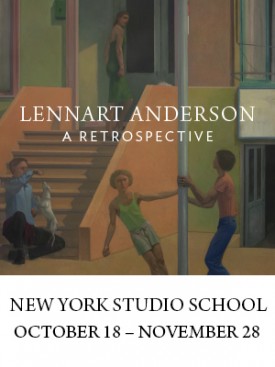

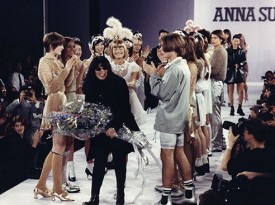
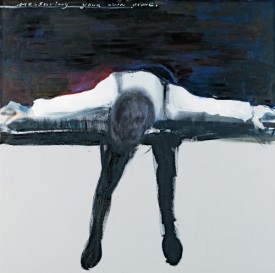
Marlene Dumas at MoMA and Elizabeth Peyton at the New Museum
Dumas and Peyton are united in their limitations as well as their strengths—and, arguably, in their capacity to ensure that their limitations are strengths. Dumas’s photo-dependency gives her imagery political edge. Denial of sensory depth almost punishes viewers for yearning for it, reminding them of the urgencies of injustice and exploitation that this art – and their consciences – should be addressing. Peyton’s style wallows in its own patheticism, as if cloying, ephemeral, illustration-technique are symptoms of self-pity. Such knowingly retarded means sit perfectly with the basically adolescent emotion she taps, which is that of star-struck infatuation.

Magdalena Abakanowicz: The Reality of Dreams at Mary and Leigh Block Museum of Art, Northwestern University
These monumental drawings consist of interwoven lines made with charcoal or gouache that tangle and bind together to form strange organic beings. Forms allude to a tree trunk, a human torso, a flower, or an insect; they explore the ambivalence between nature’s capacity to produce the mysterious pulsating of life which is simultaneously haunted by the treachery of death.
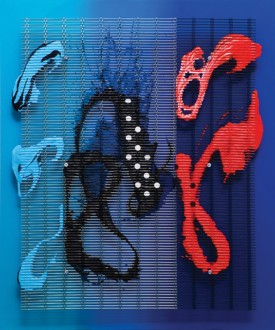
William Tillyer: The Cadiz Caprices at Jacobson Howard Gallery
There are few abstract painters at work today who manage to push both metaphor and literalism so hard, simultaneously, as William Tillyer.
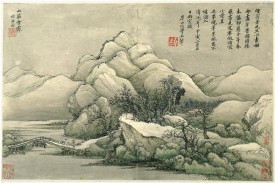
Landscapes Clear and Radiant: The Art of Wang Hui at the Metropolitan Museum of Art
The attractiveness of the towering, tree covered mountains in Landscape after Wang Meng’s “Travelers amid Autumn Mountains” is self-evident. But if you cannot also see how this is a copy of a fourteen century imitation of Dong Yuan’s 10th century Travelers amid Autumn Mountains, then who knows what you are missing.
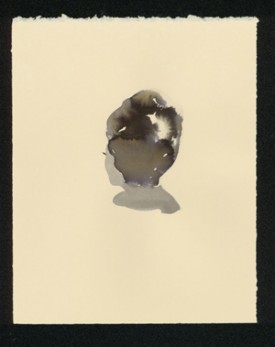
Lorna Simpson: Ink at Salon 94 and Salon 94 Freemans
The tensions between intimate and public, between information and interpretation, in Simpson’s drawings of women’s hair take on a different meaning in a second body of work in what the artist calls the “orchestrated theatrical disaster” of war.
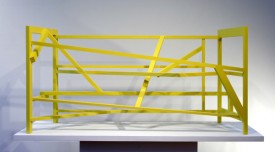
Willard Boepple: Looms at Lori Bookstein Fine Art
The author finds unexpected links between Boepple and the Surrealist phase of Alberto Giacometti

The Unknown Blakelock at the National Academy Museum
In addition to his spontaneous brushstrokes, Blakelock explores a decalcomania-like technique of load, press, smear, and lift. This emphatically material-based process creates a raised, textural web of paint activity with a few scattered reds, oranges and yellows flecking a surface that is eerily similar to Jackson Pollock’s and as interesting to ponder.
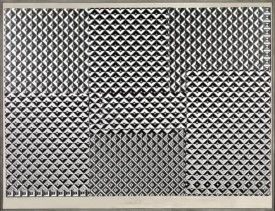
Zero in NY at Sperone Westwater Gallery
Working outside the gallery system, these artists made single-evening exhibitions, often in their own studios, issuing manifestos with these events. While some artists involved with Zero, like Lucio Fontana, are well recognized in America, this is the first survey of the lesser-known group in the States.

Old Masters, New World: America’s Raid on Europe’s Great Pictures by Cynthia Saltzman
At the end of the Civil War, there were very few significant paintings in America. By the start of the Great War, however, thanks to a surprisingly small group of men and women, the extensive collections we possess today had started to be formed. Cynthia Saltzman, a marvelously writerly writer, has studied the literature, read … Continued
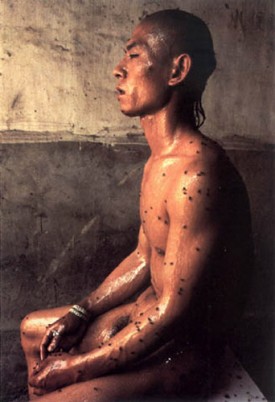
New China New Art by Richard Vine
Vine and artist Zhang Hongtu present revised/expanded edition at New York Public Library this Wednesday (February 1)

